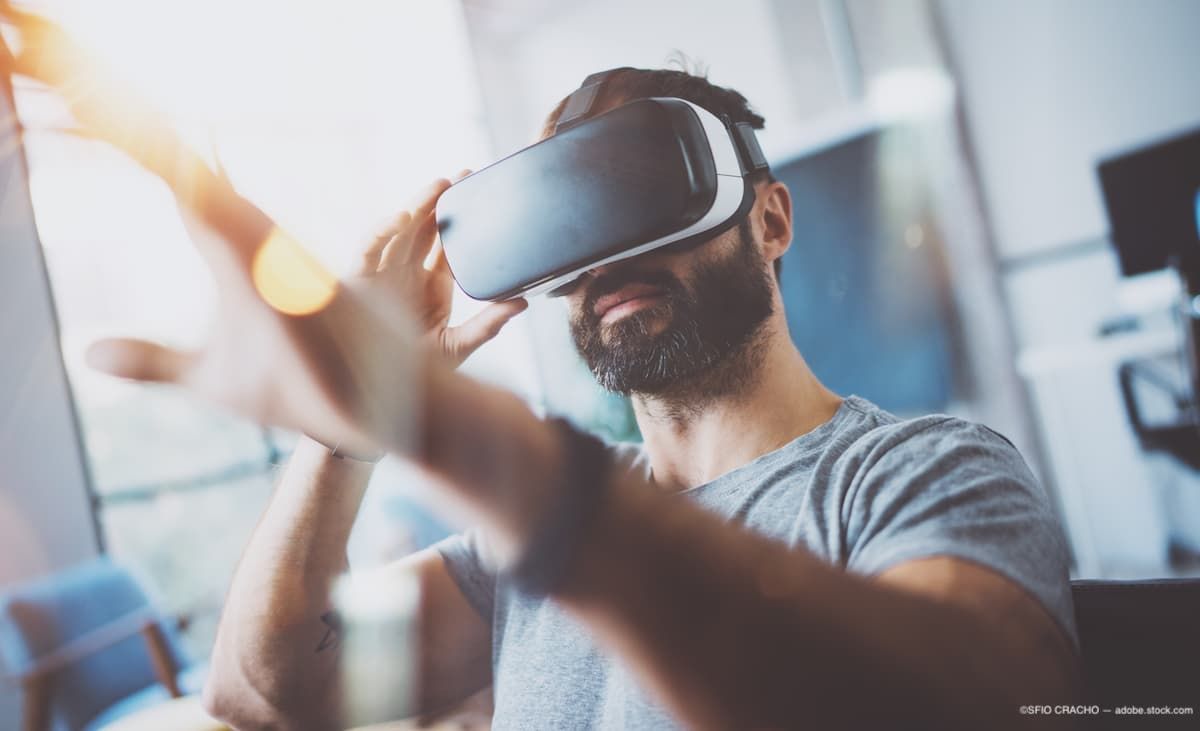Virtual Vision Health to unveil new features for virtual field headset during Vision Expo East
According to the company, its Virtual Eye Pro features improve visual field testing for practice and patients.
Image Credit: AdobeStock/SFIOCRACHO

Virtual Vision Health announced it will showcase new testing features in the Virtual Eye Pro at Vision Expo East 2024 in New York City and ASCRS 2024 in Boston.
According to a news release, the virtual reality visual field headset, developed and validated at Bascom Palmer Eye Institute, increases practice efficiency by offering improved test modalities, reporting accuracy, and repeatability comparable to standard automated perimetry (SAP) tests.1,2
"We are proud to introduce proprietary live eye monitoring and pupillography features on the Virtual Eye Pro at Vision Expo East and ASCRS," Matteo Ziff, CEO of Virtual Vision Health, said in the news release. "These two technologies enable physicians to conduct visual field testing in an accurate and efficient exam that is more comfortable for patients. We look forward to demonstrating the features in our booth at our upcoming conferences."
Portable testing can be conducted anywhere within or outside the practice with onboard audio instructions that replace the need for technician monitoring.
At ASCRS and Vision Expo East, Virtual Vision Health will showcase 2 features now available on the Virtual Eye Pro: Live Eye Monitoring and Streaming and Pupillography.
Live Eye Monitoring and Streaming uses 8 Tobii infrared cameras and lights to track gaze and improve exam reliability. The system alerts the patient if their gaze is not fixated on the focus point, freeing staff to perform other tasks in clinic while testing is conducted. Additionally, it enables pupillometry and improved ptosis and dermatochalasis testing as these types of visual fields are highly dependent on eye positioning.
Pupillography is a scientific method for recording and measuring pupillary responses. It is used to study, identify, and treat the underlying stimuli that cause certain pupillary reactions.
In clinical trials, the suite of Virtual Eye products showed a mean sensitivity comparable to SAP (p<0.0001) for accurate assessment of the visual field 1 and demonstrated 26% shorter test times on average than traditional SAP.3 All Virtual Eye reports mirror established SAP gold standards, including visual field tests and reports.
References:
Munshi H, Da Silva K, Savatovsky E, Bitrian E, Grajewski AL. Preliminary Retrospective Validation of a Novel Virtual Reality Visual Field Standard Testing Algorithm, as Compared to Standard Automated Perimetry. Ophthalmology. – Submitted.
Patel A, Lee W, Munshi H, Chang TCP, Grajewski A, Tse D, Tse B. Comparison of Virtual Reality Device vs. Standard Automated Perimetry in the Assessment of Superior Visual Field Prior to Functional Upper Eyelid Surgery. ARVO Annual Meeting, Denver, CO. May 1st – 4th, 2022.
McLaughlin D, Munshi H, Grossman A, Grajewski AL. Value-Cost Analysis and Comparison: Standard Automated Perimetry vs. Head-Mounted Perimetry. 32nd AGS Annual Meeting, Nashville, TN. March 3-6, 2022.
Newsletter
Want more insights like this? Subscribe to Optometry Times and get clinical pearls and practice tips delivered straight to your inbox.